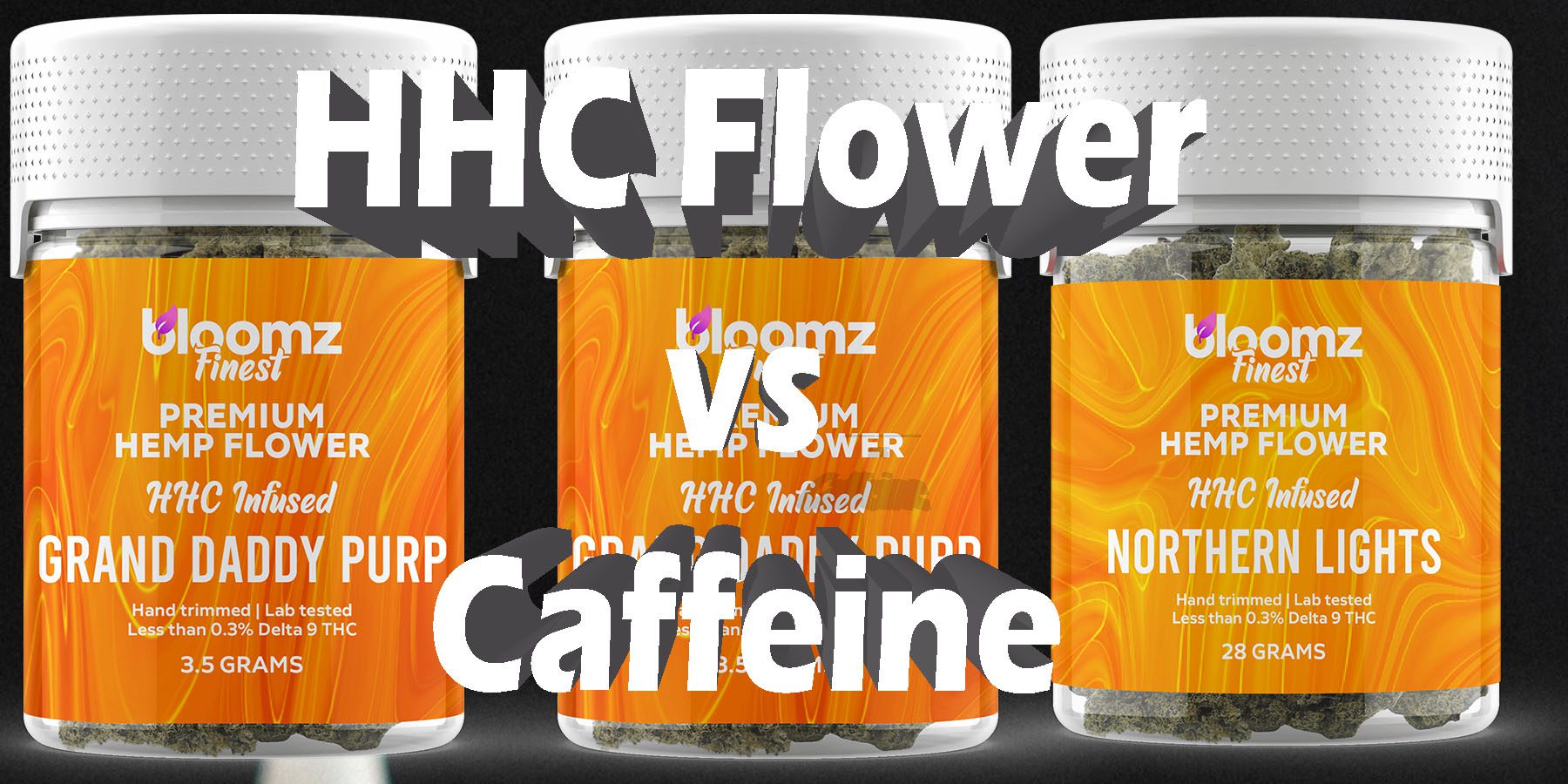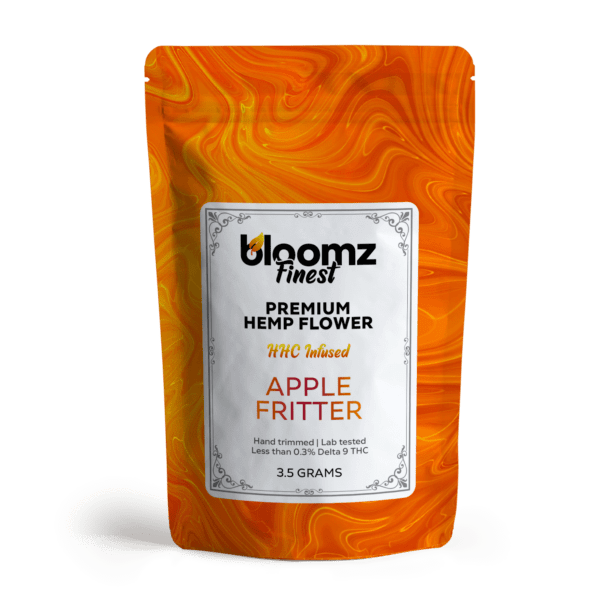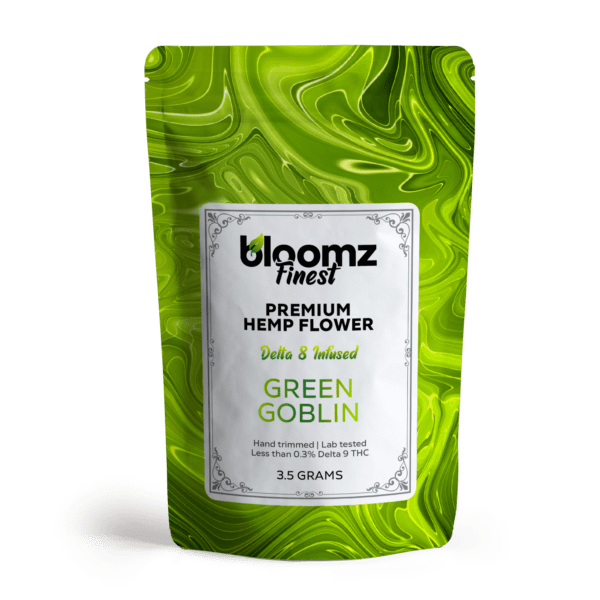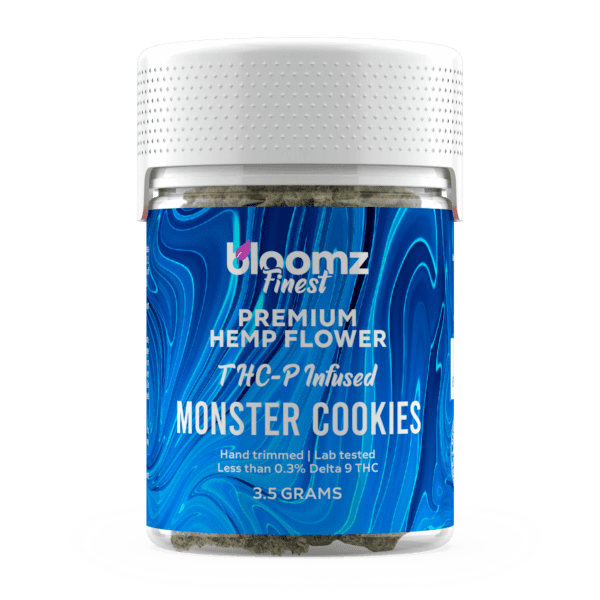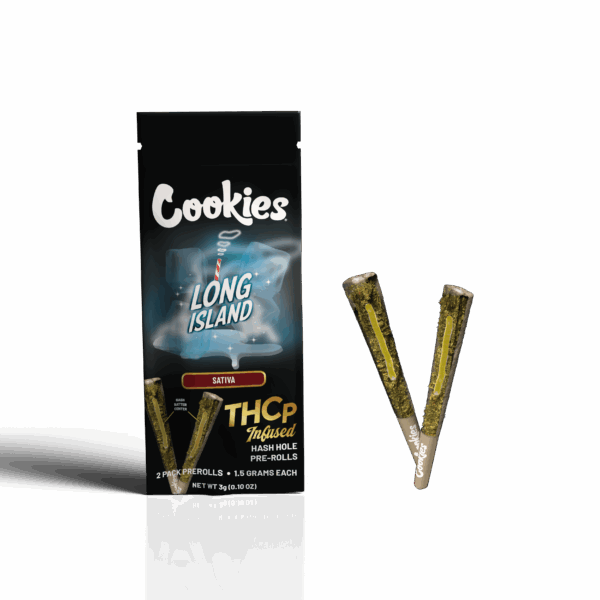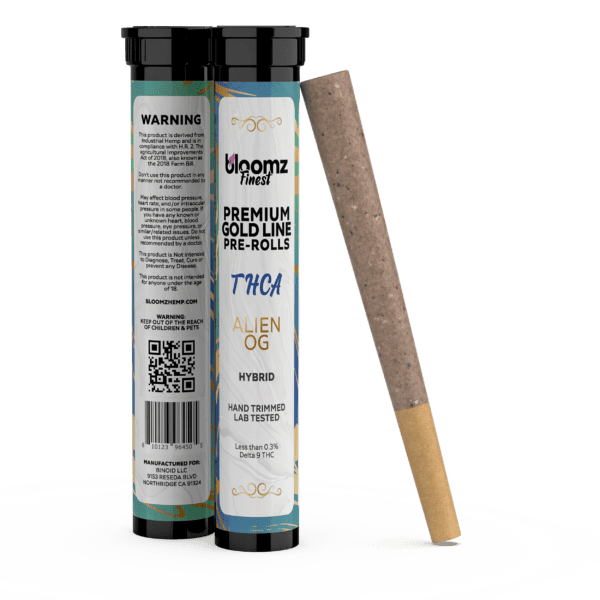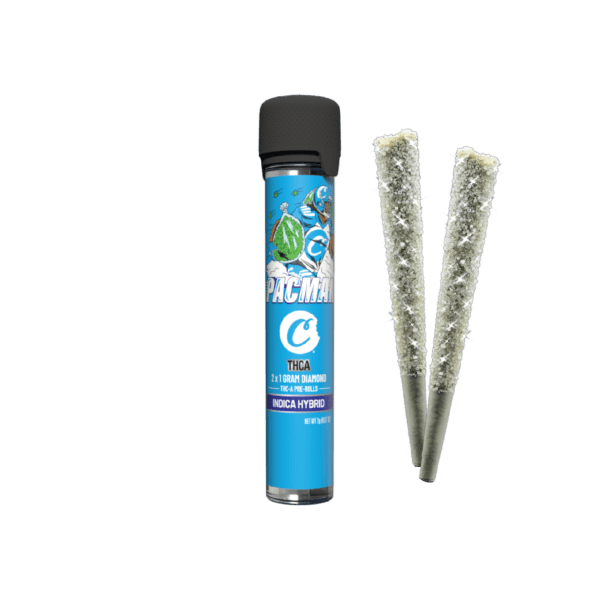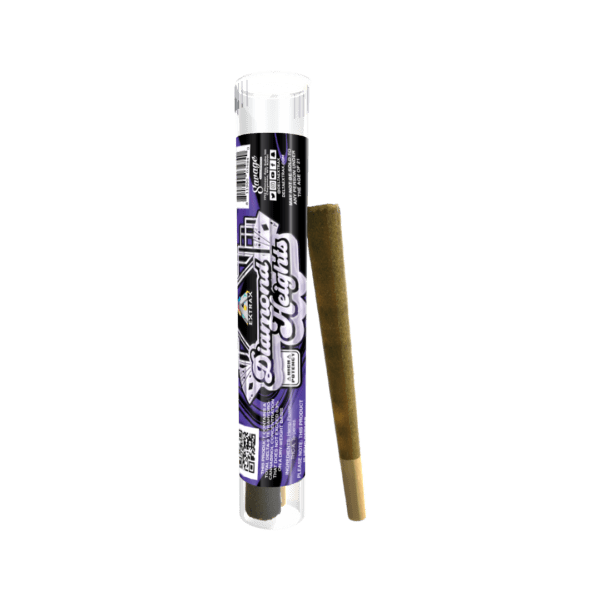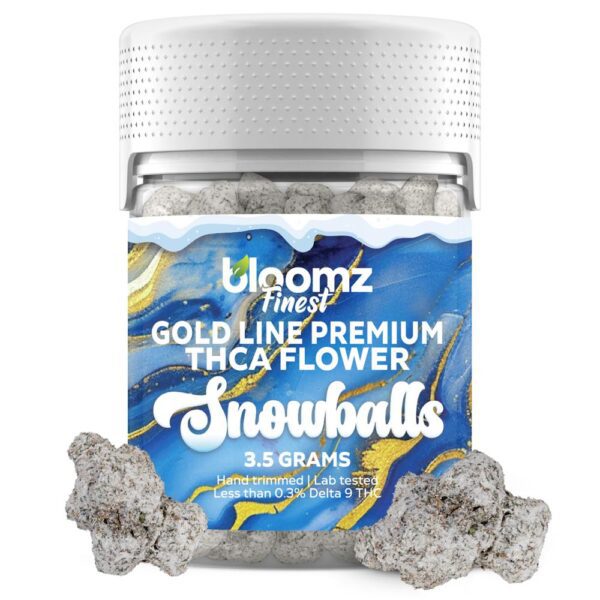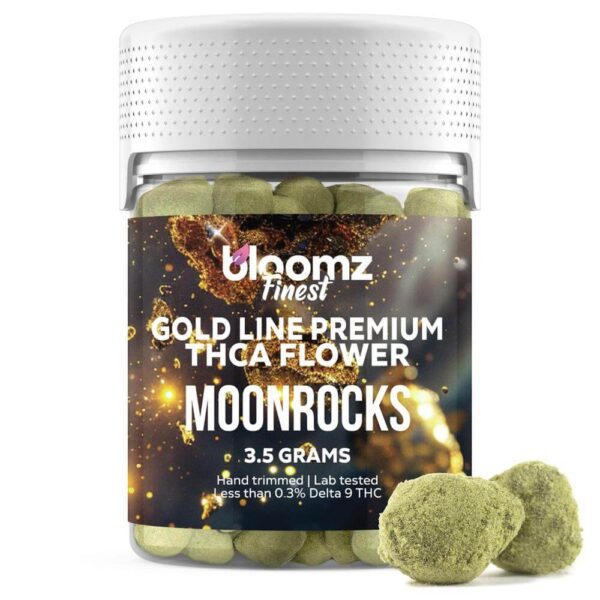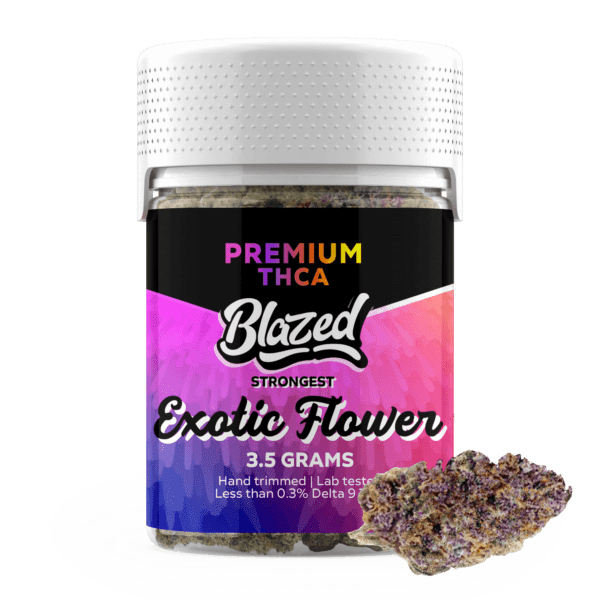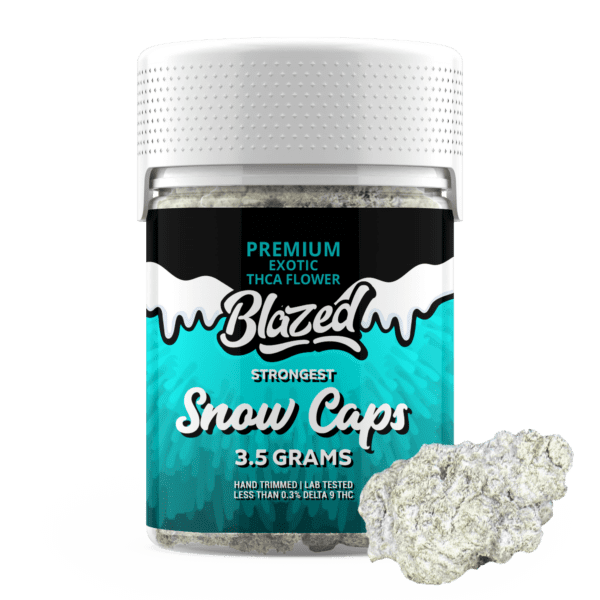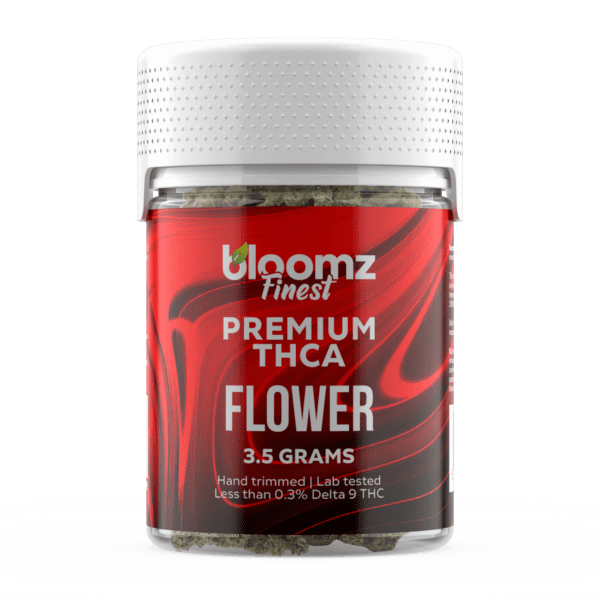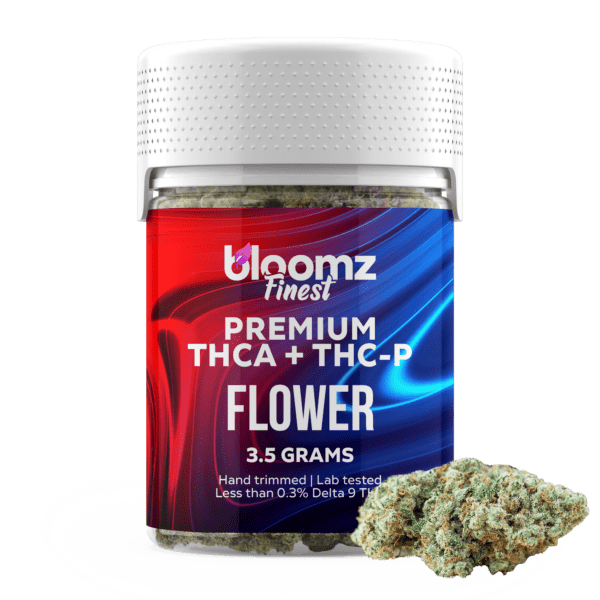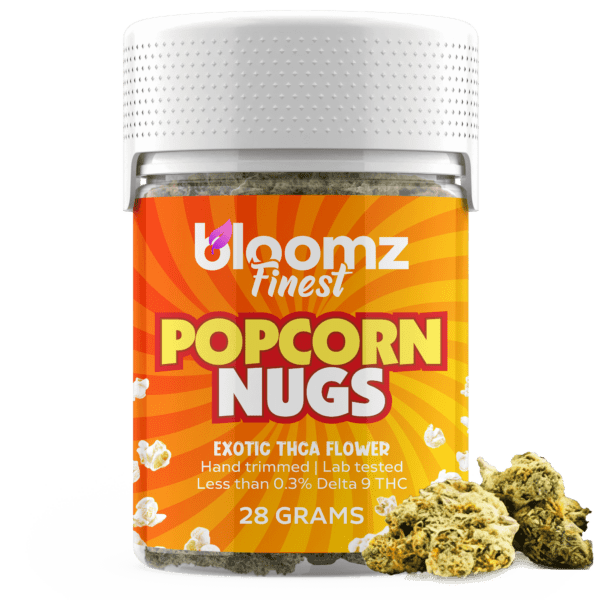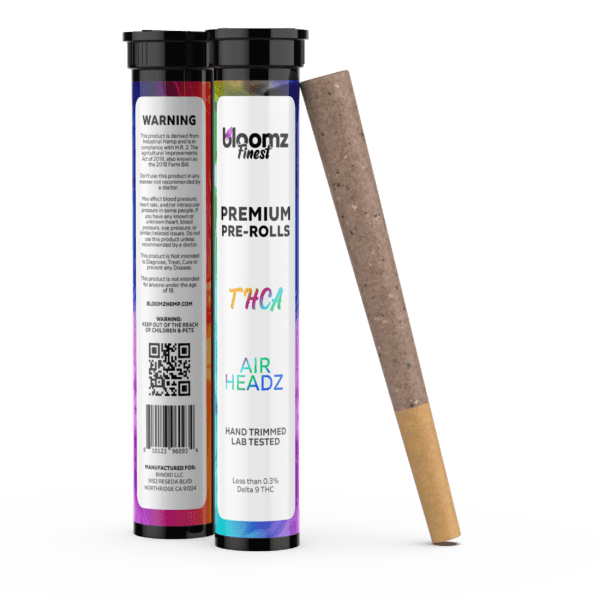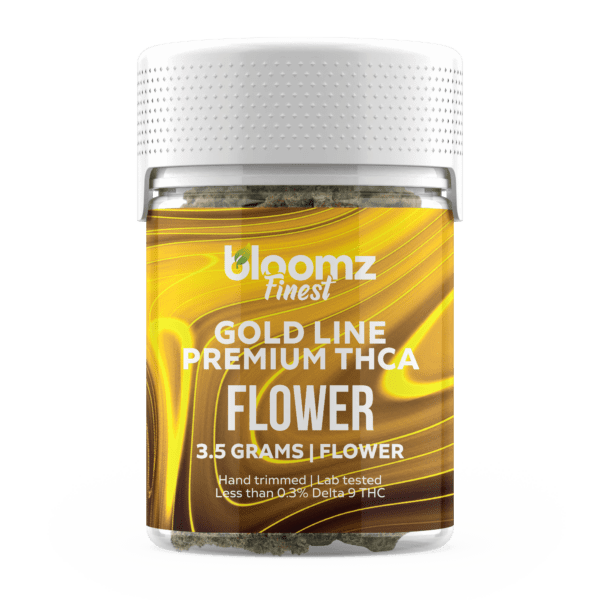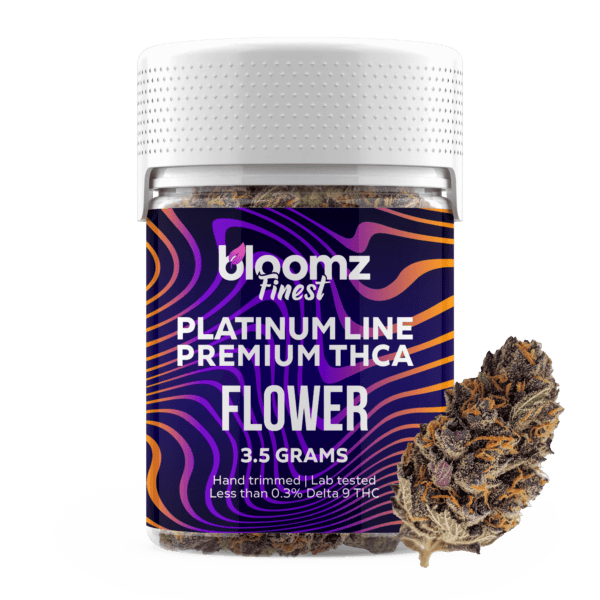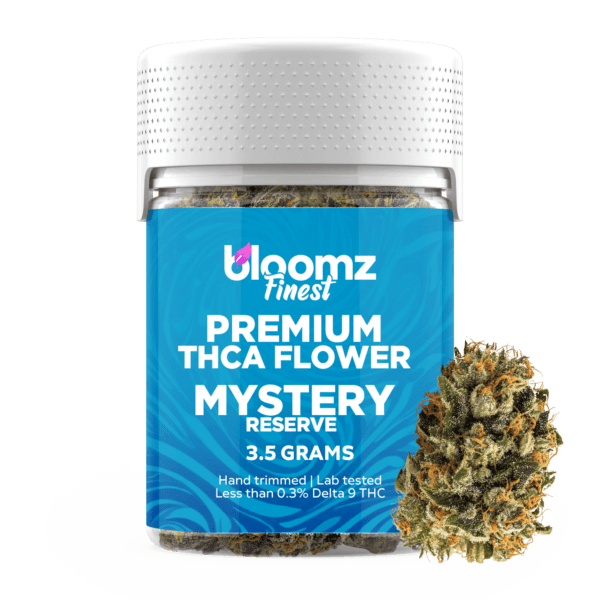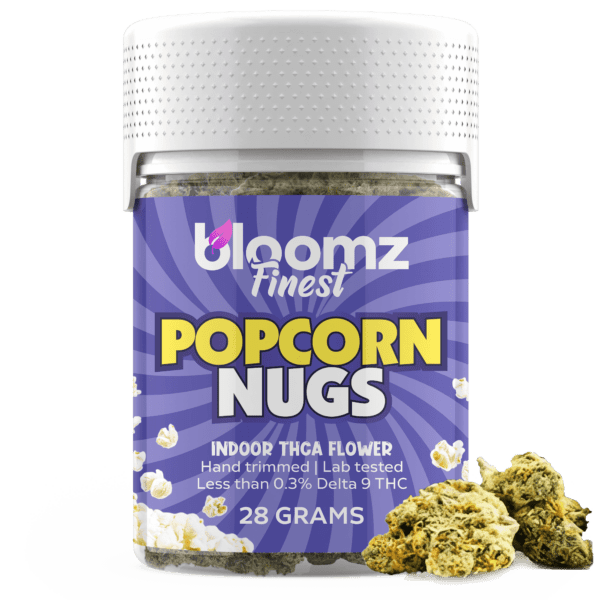In the vast landscape of modern wellness and daily rituals, two titans stand apart, each offering a distinct path to altering our state of being. On one side, we have the ancient, energizing force of caffeine, the world’s most beloved stimulant, fueling civilizations, late-night study sessions, and early morning meetings for centuries. It’s the familiar jolt that sharpens the mind and shakes off the cobwebs of sleep. On the other side, a newcomer emerges from the ever-innovating world of cannabinoids: HHC flower, a novel creation offering a unique journey into euphoria and relaxation. This compound, born from the humble hemp plant through scientific ingenuity, beckons with promises of a different kind of shift in perception.
The daily choice for many is no longer just about waking up versus winding down; it has become a nuanced decision about the very texture of our consciousness. The dialogue between the familiar kick of a morning brew and the gentle lift of an evening puff represents a fascinating intersection of tradition, science, lifestyle, and personal preference that shapes our daily experiences in profound ways.
To Buy HHC Flower Click Here
Recommended products
Why It’s Important to Breakdown the Matchup of HHC Flower vs. Caffeine
Navigating the choices we make to influence our mood, energy, and overall state of mind requires clarity and understanding. The comparison between HHC flower and caffeine is more than just a simple face-off between an upper and a downer; it is a deep dive into two fundamentally different philosophies of personal enhancement. Breaking down this matchup is crucial because it empowers individuals to make intentional, informed decisions that align with their specific goals, lifestyles, and even the time of day.
In a world saturated with options, from artisanal coffee beans to exotic cannabinoid-infused botanicals, a detailed examination helps cut through the noise, revealing the unique properties, potential effects, legal landscapes, and social contexts of each substance. This exploration is vital for anyone looking to consciously curate their experiences, whether they are seeking heightened focus for a demanding project or a serene escape after a long week.
Furthermore, this analysis serves as a critical educational tool. The cannabinoid market, particularly with hemp-derived compounds like HHC, is relatively new and often misunderstood, shrouded in a complex web of evolving regulations and scientific jargon. By placing HHC flower in direct comparison with caffeine—a substance so deeply integrated into our global culture that it is almost universally understood—we create a familiar framework for comprehending the unfamiliar.
This juxtaposition allows for a more relatable and grounded discussion about HHC’s effects, methods of consumption, and legal standing. It helps demystify the cannabinoid and provides a balanced perspective, acknowledging both its appealing attributes and the considerations one must take into account. Ultimately, this detailed breakdown is not about declaring a winner, but about illuminating the path for the user, ensuring their choices are made not out of habit or hype, but with genuine insight and self-awareness.
Contender #1: HHC Flower
In the rapidly expanding universe of hemp-derived cannabinoids, HHC flower has carved out a distinct and compelling niche for itself, capturing the attention of connoisseurs and curious newcomers alike. It represents a fascinating fusion of nature and science, starting as humble, high-quality hemp and being transformed into something entirely new. HHC, or Hexahydrocannabinol, offers an experience that is often described as uniquely its own, providing a gentle yet profound sense of bliss and euphoria that sets it apart from its more famous cousins in the cannabinoid family.
This contender doesn’t rely on the sharp, driving energy of a stimulant; instead, its appeal lies in its ability to smooth the edges of the day, to inspire a sense of calm creativity, and to offer a novel form of relaxation. As we delve into the world of HHC flower, we uncover a product born from sophisticated processes, rich in variety, and governed by a complex legal tapestry that continues to shift and evolve across the nation.
To properly understand the flower, one must first be introduced to the remarkable cannabinoid that serves as its namesake: Hexahydrocannabinol (HHC) – a semi-synthetic cannabinoid that is a hydrogenated form of THC, meaning that, in a laboratory setting, hydrogen atoms are added to the THC molecule, breaking one of its double bonds. This process of hydrogenation is the same one used to turn vegetable oil into margarine, and it has a profound effect on the molecule’s structure. By saturating the molecule with hydrogen, its structure becomes significantly more stable and less susceptible to degradation from oxidation and UV light. This molecular stability is HHC’s defining characteristic.
The cannabinoid itself was first created in the 1940s by the famed American chemist Roger Adams. While trace amounts of HHC can be found naturally in the cannabis plant, the amounts are far too small to be commercially extracted. Therefore, the HHC used in consumer products is created in a lab by taking legally-hemp derived THC (or CBD that has first been converted to THC) and subjecting it to this precise hydrogenation process.
With this crucial scientific context, it becomes clear that “HHC flower” isn’t a strain of cannabis that a farmer can cultivate to be naturally rich in HHC but instead, it’s a manufactured, composite, and infused product. The process begins with high-quality, legally grown hemp flower, which is naturally rich in CBD (cannabidiol) and contains less than 0.3% Delta 9 THC. This beautiful, terpene-rich flower provides the physical structure, the aromatic compounds that create the flavor and smell, and a host of other minor cannabinoids. This foundational hemp flower then serves as the base which is meticulously infused or coated with a pure HHC distillate, the potent, honey-like oil created through the hydrogenation process.
This infusion process is what elevates the simple, non-intoxicating hemp flower into a potent, psychoactive product, delivering the unique and sought-after effects of HHC in a familiar, smokeable format. The quality and safety of the final product are therefore entirely dependent on two separate but equally important factors: the premium quality of the initial hemp flower and the verified purity of the HHC distillate with which it is infused.
Recommended products
The creation of a high-quality and effective HHC flower is a multi-stage process that requires a perfect marriage of expert agricultural practices and precise, high-level laboratory techniques. Each and every step in this complex chain of production is critically important to producing a final product that is safe, potent, consistent, and enjoyable for the end consumer:
Sourcing of Premium, High-Grade Hemp Flower: The foundation of any good HHC flower is, without question, the base flower itself. The most reputable and quality-conscious producers start with organically grown, premium-grade CBD or CBG hemp flower. This flower is cultivated not for its cannabinoid content alone, but for its superior physical and aromatic characteristics: a dense and aesthetically pleasing bud structure, a vibrant and rich color, a very high natural terpene content to ensure a robust flavor and aroma, and smooth, clean-burning properties that are essential for a pleasant smoking experience.
Creation of Pure HHC Distillate via Hydrogenation: In a completely separate, highly controlled, and sophisticated laboratory setting, the HHC itself is created. This process begins with a pure, hemp-derived THC concentrate. This THC is then placed in a specialized reactor with a catalyst (often a noble metal like palladium) and is subjected to high pressure with hydrogen gas. This hydrogenation process breaks a double bond in the THC molecule and adds hydrogen atoms, converting it into the more stable HHC. The resulting crude HHC oil must then be meticulously purified through multiple stages of distillation and refinement to remove the catalyst and any unreacted reagents, resulting in a pure, potent, and clean HHC distillate.
The Artful and Consistent Infusion Process: This is the key manufacturing step where the agricultural product (the flower) and the laboratory product (the distillate) are carefully combined into a single, cohesive item. There are several proprietary methods for this infusion. A common technique involves gently heating the thick HHC distillate to make it less viscous and then spraying it in a fine, even mist over the hemp buds as they are gently tumbled. More advanced methods may involve solventless cryo-infusion or vacuum infusion to ensure a deeper and more even penetration of the HHC into the flower material without oversaturating it.
Essential Curing and Thorough Quality Control: After the infusion process, the now-sticky and enhanced buds must be allowed to properly cure. This critical step ensures that the HHC distillate is evenly absorbed and that any excess moisture has evaporated, which is crucial for a smooth, even burn and the long-term stability of the product. During this phase, dedicated quality control teams will visually inspect the product for consistency and take numerous samples for in-house testing to ensure that the HHC potency is accurate and evenly distributed throughout the batch.
Final, Full-Panel Third-Party Laboratory Testing: As the final and most important step for ensuring consumer safety and transparency, representative samples from every finished batch of HHC flower are sent to an independent, accredited, third-party laboratory. This lab conducts a full-panel analysis, which is then published in a Certificate of Analysis (COA). The COA provides a detailed breakdown of the cannabinoid potency, verifying the HHC content and the legal compliance of the Delta 9 THC level, and crucially, it also screens for any harmful contaminants, including residual solvents, heavy metals, pesticides, and the catalyst used in hydrogenation, providing a final stamp of safety for the consumer.
The HHC flower market offers a robust variety of product types and formats, closely mirroring the traditional cannabis market to provide options for a wide range of consumer preferences. This selection allows individuals to choose a product that aligns with their budget, their desire for convenience, and their preferred method of consumption. While the core product is always a skillful combination of premium hemp flower and potent HHC distillate, the different forms it takes can significantly shape the user experience:
Indoor HHC Flower: This category represents the top-shelf, connoisseur-grade offering in the HHC flower world. The process begins with exceptionally high-quality CBD or CBG hemp flower that has been cultivated indoors in a perfectly controlled and optimized environment. This meticulous cultivation results in a base flower that is dense, visually stunning with a thick coating of its own natural trichomes, and exceptionally rich in a complex profile of terpenes. When this premium-grade hemp is carefully and evenly infused with pure HHC distillate, it creates a final product that is celebrated for its superior, nuanced flavor, its remarkably smooth smoke, and its potent, well-rounded, and highly consistent effects.
Outdoor HHC Flower: To create a more accessible and budget-friendly option for a wider range of consumers, producers often utilize high-quality, sun-grown CBD or CBG hemp flower as the foundational material. While outdoor flower may have a slightly less manicured or “perfect” appearance and a more rustic, earthy terpene profile compared to its indoor-grown counterpart, it can still be incredibly flavorful and effective when cultivated with care. When infused with the same pure HHC distillate, it becomes a highly effective and enjoyable product that offers fantastic value for consumers who prioritize the final end effect over pristine aesthetic qualities.
HHC Small Buds: Often referred to simply as “smalls,” this product consists of the smaller, often popcorn-sized buds from a premium hemp harvest that have been infused with HHC. It is important to understand that these are not lower-quality buds in terms of their chemical makeup; they simply grew on the lower branches of the plant and did not get as large as the top colas. By infusing these small but still potent and terpene-rich hemp buds with HHC distillate, producers can offer a product that delivers the full flavor and potency of the premium nugs but at a more economical price point, making it a favorite among regular users.
HHC Moonrocks: These are a high-potency, artisan specialty product designed for those with a significant tolerance or for users seeking a particularly powerful and long-lasting experience. The creation of an HHC Moonrock is a triple-layered infusion process. It starts with a solid, premium hemp flower bud, which is then generously coated in a thick, sticky layer of highly potent HHC distillate. Before this powerful layer can dry, the entire gooey bud is thoroughly rolled in a powdery, blonde layer of pure CBD or CBG kief (the concentrated, sifted resin glands from the hemp plant). This creates a super-concentrated, dense, and slow-burning product that is incredibly potent and flavorful.
HHC Pre-Rolls, Blunts & Joints: Offering the ultimate in user convenience and ease of use, HHC pre-rolls are ready-to-smoke products that have been professionally filled and rolled with high-quality ground HHC-infused flower. They completely eliminate the need for any consumer preparation, such as owning a grinder, buying rolling papers, or possessing the skill to roll a proper joint. Available in a wide variety of strains and sizes and often packaged in single, portable, and odor-proof tubes, pre-rolls are the perfect, hassle-free, grab-and-go option for social settings, travel, or any time a simple, straightforward experience is desired.
When you see a familiar “strain” name, such as OG Kush or Sour Diesel, associated with an HHC flower product, it is fundamentally important to understand that this name is referring to the genetic strain of the base hemp flower that was used in its creation, before the infusion of the HHC distillate. The primary psychoactive and intoxicating effects will be driven by the infused HHC concentrate. However, the more subtle, nuanced, and aromatic aspects of the overall experience—the specific flavor profile that greets the palate, the quality and character of the aroma that fills the air, and the gentle modulations in mood that form the undertones of the powerful experience—are all determined by the unique profile of aromatic terpenes that were naturally produced by the original CBD or CBG strain.
The best producers carefully select foundational hemp strains that are known to have robust, desirable, and potent terpene profiles in order to create a more sophisticated, flavorful, and enjoyable final product, using the familiar families below:
Indica: When an HHC Flower product is marketed under an Indica strain name, it signifies that the base hemp flower used in its creation was an Indica-dominant genetic variety, known for its relaxing and calming characteristics. These hemp strains are typically rich in a profile of terpenes like myrcene, linalool, and beta-caryophyllene, which are well known for producing earthy, musky, floral, and sometimes spicy aromas, and are often anecdotally associated with deeply calming and sedating sensations. The intended experience of an Indica-labeled HHC flower is a powerful synergy between the calming and soothing terpene profile from the flower and the pronounced physical relaxation provided by the HHC molecule itself, resulting in a product that is designed for deep, tranquil relaxation.
Sativa: An HHC flower product that is sold under a Sativa strain name has been crafted using a Sativa-dominant hemp variety as its base. These specific hemp strains are often very high in terpenes like terpinolene, limonene, and pinene, which are famous for contributing to bright, zesty, sweet, citrusy, and sharp piney aromas that many users find to be uplifting and energizing. The invigorating and fruity terpene profile of the Sativa flower is strategically combined with the uniquely euphoric and stimulating cerebral effects of HHC to create an experience that is intended to be incredibly uplifting, creativity-enhancing, and suited for high-energy pursuits or deep, focused artistic immersion.
Hybrid: Hybrid HHC flower products are created by utilizing a hybrid hemp strain as the foundational material, which by definition offers a balanced and often highly complex profile of terpenes derived from both its Indica and Sativa parentage. These strains are carefully chosen by producers for their well-rounded, multi-layered, and universally appealing aromas and flavors. The primary goal of a Hybrid HHC flower is to provide a versatile experience that delivers the powerful effects of HHC accompanied by a rich and satisfying terpene profile that is neither excessively sedating nor overly stimulating, making it a popular choice for experienced users who want the best of both worlds.
The legal status of HHC in the United States is exceptionally complex and exists in a state of profound legal ambiguity and flux. Its claim to legality is derived from the 2018 Farm Bill, which federally legalized hemp and its derivatives, so long as they contain less than 0.3% Delta 9 THC. Because HHC is not technically a “THC” molecule (it is a hexahydrocannabinol, not a tetrahydrocannabinol), and it is derived from hemp, its proponents argue that it is a federally legal hemp product that falls outside the scope of laws targeting THC isomers. However, this is a tenuous legal argument that is heavily contested. The DEA has stated that synthetically-derived cannabinoids are illegal, and since HHC is created through a chemical process (hydrogenation), it is often considered semi-synthetic.
Furthermore, its intoxicating nature has caused many states to take regulatory action to ban HHC either explicitly by name or by including it in broader bans on all intoxicating or synthetically derived cannabinoids, lumping it in with Delta 8 and THC-P. Therefore, while HHC may be available for purchase online, its legality is far from guaranteed and is subject to a chaotic and shifting patchwork of state laws and federal interpretations, making it a legally risky product to possess in many jurisdictions.
Recommended products
HHC flower is used by consumers for the purpose of achieving a unique and enjoyable psychoactive experience, one that is often sought for its balance of euphoria and functionality. The methods of consumption are identical to those used for traditional cannabis, relying on the application of heat to aerosolize the active compounds for inhalation or to prepare it for oral ingestion. The choice of consumption method below typically depends on the user’s preference for the speed of onset, the duration of the effects, and the overall character of the experience they are seeking:
Vaping (using a portable or desktop vaporizer): Vaping is widely considered to be an exceptional method for consuming HHC flower, primarily because it offers a cleaner, smoother, and significantly more flavorful experience than traditional smoking. A modern dry herb vaporizer is a sophisticated device specifically designed to heat the infused flower to a precise, user-controlled temperature. This temperature is hot enough to efficiently vaporize the HHC and the delicate, aromatic terpenes without actually causing the plant material to ignite and combust. This process creates a flavorful, cannabinoid-rich vapor that is generally considered to be less harsh on the lungs than hot, acrid smoke.
Smoking: This remains the most straightforward, traditional, iconic, and culturally resonant method of consumption. By smoking the HHC-infused flower in a rolled joint, a classic pipe, or a water pipe (often called a bong), the user applies intense, direct heat from a flame. This rapid heating process instantly and effectively vaporizes the HHC distillate for immediate inhalation deep into the lungs. The effects from smoking are typically felt within just a few minutes, which allows for very easy, intuitive, and real-time dose titration based on the user’s immediate feedback.
Cooking/Baking: HHC flower can certainly be used as the primary ingredient to create potent and long-lasting homemade edibles. Because HHC is already in its active form, it does not need to be decarboxylated like THCA. However, the base hemp flower is likely rich in the acidic cannabinoid CBDA. Therefore, if the user wishes to also gain the well-known benefits of activated CBD in their final edible product, they would still need to go through the decarboxylation process (gently baking the flower at a low temperature) to convert the CBDA into CBD. After this optional but recommended step, the fully activated flower can be infused into a fat like butter or coconut oil and then used in any number of culinary recipes.
The experience of using HHC flower is often described by users as a uniquely pleasant and well-balanced journey into an altered state of consciousness. While individual experiences can vary based on dosage, tolerance, strain, and personal biochemistry, a general consensus has emerged regarding its characteristic effects. Most commonly, HHC is reported to produce a powerful sense of euphoria and mental bliss, lifting the mood and encouraging a positive, sometimes giggly, outlook.
This cerebral uplift is typically accompanied by a warm and soothing wave of physical relaxation that spreads throughout the body, helping to release tension without being overly sedating. Many users find HHC to be an excellent “in-between” cannabinoid, possessing a potency that is noticeably stronger than Delta 8 THC but generally gentler and less mentally racy than traditional Delta 9 THC.
This makes it an appealing choice for those who find Delta 9 to be too intense or prone to inducing feelings of unease. The effects can also include altered sensory perception, where colors may seem brighter and music may sound more profound, as well as a shift in the perception of time. It often inspires a sense of creativity and curiosity, making it suitable for engaging in hobbies, enjoying nature, or having deep conversations with friends. The overall profile is one of happy, relaxed euphoria that allows the user to remain relatively clear-headed and functional at lower doses.
Pros & Cons
Like any substance that alters one’s state of being, HHC flower comes with its own distinct set of advantages and potential drawbacks. Evaluating these pros and cons is a vital step for any individual considering incorporating it into their lifestyle. The positive aspects often revolve around the unique quality of its effects, its legal accessibility in many areas, and its physical properties, while the considerations tend to focus on the newness of the compound and the nature of the current market.
Pros:
One of the most celebrated attributes of HHC flower is the unique and balanced nature of the bliss it provides. Users frequently report a delightful cerebral high that fosters euphoria and creativity without the heavy mental fog that can sometimes accompany other cannabinoids, allowing for a more lucid and engaging experience. This mental uplift is beautifully paired with a thorough body relaxation that feels comforting and complete.
Thanks to the chemical process of hydrogenation, the HHC molecule is significantly more stable than its THC counterparts. This molecular stability translates into a much longer shelf life for HHC flower and other HHC products, as it is more resistant to degradation from oxygen, heat, and UV light, ensuring the product maintains its potency for an extended period.
Under the current interpretation of the 2018 Farm Bill, HHC flower exists in a state of federal legality as long as it is derived from hemp and contains less than 0.3% Delta 9 THC. This has made it legally accessible to a much wider audience in many states where traditional cannabis remains prohibited, opening up a new avenue for adults to explore cannabinoid experiences.
The HHC flower market offers an impressive variety of options to suit nearly any preference. From the choice between uplifting Sativa, relaxing Indica, or balanced Hybrid strains to the selection of product types like premium indoor buds, budget-friendly smalls, or ultra-potent moonrocks, consumers have a great deal of control over tailoring their experience.
For many individuals, HHC flower strikes a perfect middle ground in terms of potency. It provides a more substantial and noticeable effect than Delta 8 THC, yet it is often perceived as being less overwhelming and having a lower likelihood of inducing anxious feelings compared to high concentrations of Delta 9 THC, making it an appealing alternative.
The consumption of HHC flower is highly versatile, accommodating a wide range of user preferences. Whether one enjoys the rich flavor and rapid onset of vaping, the time-honored ritual of smoking a joint, or the long-lasting effects of homemade edibles, HHC flower can be adapted to fit the desired method.
The underlying hemp flower that serves as the base for the HHC infusion brings its own suite of benefits through the entourage effect. The natural terpenes and minor cannabinoids of the hemp plant work in synergy with the HHC, contributing to a more complex, nuanced, and well-rounded experience than consuming HHC isolate alone would provide.
The rapid onset of effects when HHC flower is inhaled, either through smoking or vaping, is a significant advantage for many users. This allows for easy and effective dose titration, as one can take a small puff, wait a few minutes to gauge the effects, and then decide if they want to consume more, reducing the risk of accidental overconsumption.
The infusion process allows for a high degree of consistency and quality control in the final product. Reputable manufacturers can precisely control the amount of HHC distillate applied to the flower, and comprehensive third-party lab testing can verify the exact potency and purity of each batch, giving consumers confidence in what they are purchasing.
As a relatively new addition to the cannabinoid family, HHC offers a novel experience even for seasoned cannabis users. Its unique molecular structure interacts with the body’s endocannabinoid system in a slightly different way, providing a fresh and distinct feeling of euphoria and relaxation that sets it apart from more familiar cannabinoids.
Cons:
As a relatively new compound on the consumer market, HHC lacks the extensive body of long-term scientific and clinical research that exists for more established cannabinoids like THC and CBD. This means that the full scope of its long-term effects on the human body is not yet well understood, which is a significant consideration for any user.
The legal status of HHC, while federally permissible under one interpretation of the Farm Bill, remains in a precarious gray area. The DEA has not officially clarified its stance, and many states have moved to ban or restrict HHC, creating a confusing and inconsistent legal landscape that can change rapidly, putting consumers at potential legal risk.
The hemp-derived cannabinoid market is largely unregulated at the federal level, which can lead to a wide variance in product quality and safety. Without mandatory oversight, some manufacturers may cut corners, leading to products with inaccurate potency labels or, more seriously, contaminants like residual solvents, pesticides, or heavy metals. It is crucial for consumers to only purchase from reputable brands that provide comprehensive third-party lab reports.
Similar to THC, HHC is a psychoactive compound that can cause impairment. Operating machinery, driving a vehicle, or performing tasks that require full concentration after consuming HHC flower can be dangerous. The impairment can affect judgment, coordination, and reaction time, and users must be responsible and mindful of their activities after consumption.
Recommended products
-
THC-P HashHole Pre-Rolls – Cookies
$19.99$24.99 -
Exotic THCA Pre-Rolls Gold Line – 3-Pack/6 Pack
$36.99$69.99 -
THCA Pre-Rolls with THCA Diamonds – Cookies
$17.99$21.90 -
THCA Pre-Rolls | Diamond Heights – Extrax
$17.99$23.99
Contender #2: Caffeine
Standing in stark, energetic contrast to the tranquil world of HHC is caffeine, the undisputed global champion of stimulants. This powerful psychoactive compound is woven so deeply into the fabric of daily life for billions of people that it’s often not even thought of as a drug, but rather as a fundamental part of the morning routine, a social lubricant, and an essential tool for productivity. From the rich, dark brew of a morning espresso to the crisp fizz of an afternoon soda, caffeine is the invisible force that fuels our modern, fast-paced world.
It is a substance of immense cultural and economic importance, a dependable ally that helps us push through fatigue, sharpen our focus, and meet the demands of the day head-on. As we explore this second contender, we’ll see that caffeine is far more than just a simple pick-me-up; it’s a complex chemical with a fascinating mechanism of action, a wide array of sources, and a profound impact on our bodies & minds.
And so, at its most fundamental level, caffeine is a naturally occurring central nervous system stimulant belonging to the methylxanthine class of psychoactive compounds. It is a purine alkaloid found in a variety of plants, where it acts as a natural pesticide, protecting the plant from being eaten by insects. For humans, however, it has a very different effect. Caffeine’s primary mechanism of action in the brain is as an adenosine receptor antagonist. Throughout the day, as our brain works, a neurotransmitter called adenosine slowly accumulates. Adenosine binds to specific receptors in the brain, and this binding action slows down nerve cell activity, causing feelings of drowsiness and preparing the body for sleep.
Caffeine has a molecular structure that is very similar to adenosine, so similar, in fact, that it can fit perfectly into the adenosine receptors without activating them. It essentially acts as a blocker, preventing the naturally occurring adenosine from binding and doing its job. By occupying these receptors, caffeine inhibits the “sleepy” signal, allowing the brain’s natural stimulants, like dopamine and norepinephrine, to have a more pronounced effect. This leads to the classic effects of caffeine: increased neuronal firing, heightened alertness, and a reduction in perceived fatigue.
The vastly different ways individuals react to caffeine—why one person can drink a double espresso after dinner and sleep soundly while another gets jittery from a cup of green tea—is largely rooted in genetics. The primary factor influencing caffeine metabolism is the activity of a specific enzyme in the liver called cytochrome P450 1A2, or CYP1A2 for short. The production and efficiency of this enzyme are controlled by the CYP1A2 gene. Genetic variations in this gene determine whether a person is a “fast metabolizer” or a “slow metabolizer” of caffeine. Fast metabolizers have a version of the gene that produces a highly efficient enzyme, allowing them to process and clear caffeine from their system very quickly.
For them, caffeine provides a clean burst of energy with few side effects. Slow metabolizers, on the other hand, have a genetic variation that results in a less efficient enzyme. Their bodies break down caffeine at a much slower rate, meaning it stays in their system longer and its effects are more prolonged and often more intense. This can lead to undesirable effects like jitters, a racing heart, and disrupted sleep, even from small amounts. Beyond genetics, other factors like liver health, certain medications, and even pregnancy can also affect the rate of caffeine metabolism, further contributing to the wide spectrum of individual responses to this ubiquitous stimulant.
While the caffeine molecule is chemically identical regardless of its origin, there is a distinction between natural caffeine, which is extracted from plant sources, and synthetic caffeine, which is created in a laboratory. Natural caffeine is what is found in products like coffee, tea, and yerba mate. It is derived from over 60 different plant species, most commonly the coffee bean (from Coffea plants), tea leaves (Camellia sinensis), cacao beans (Theobroma cacao), and kola nuts. In these natural sources, caffeine exists alongside a host of other compounds, such as polyphenols, antioxidants, and, in the case of tea, the calming amino acid L-theanine. Some believe that these complementary compounds can modulate the effects of the caffeine, potentially leading to a smoother, less jarring experience.
Synthetic caffeine, on the other hand, is produced through a chemical synthesis process, typically using urea and chloroacetic acid as starting materials. It is a highly pure, isolated form of the caffeine molecule. This man-made version is much cheaper to produce and is the form of caffeine most commonly used in products like soft drinks, energy drinks, and over-the-counter supplements. While the core stimulating effect is the same, synthetic caffeine is absorbed more rapidly by the body, which can sometimes lead to a quicker, more intense spike in energy followed by a more noticeable crash, compared to the more buffered and gradual release from some natural sources like tea.
Caffeine is one of the most pervasive ingredients in the global food and supplement supply, appearing in a vast and ever-growing range of products. Its ability to boost energy and alertness has made it a staple ingredient in items designed for morning rituals, afternoon slumps, and athletic performance. While coffee and tea are the most traditional and well-known vectors for caffeine consumption, the modern market has infused this powerful stimulant into everything from soft drinks to workout powders.
This ubiquity means that consumers often ingest caffeine from multiple sources throughout the day, sometimes without even realizing it. Understanding the common products that contain caffeine is key to managing one’s daily intake and avoiding unintentional overconsumption:
Beverages: This is by far the largest and most diverse category of caffeinated products. Coffee, brewed from roasted coffee beans, is the quintessential caffeine delivery system for billions of people. Tea, derived from the Camellia sinensis plant, offers a gentler source of caffeine, naturally paired with L-theanine which can promote a state of calm alertness. Energy drinks are a modern invention, typically containing high doses of synthetic caffeine along with other ingredients like taurine, B vitamins, and sugar or artificial sweeteners, designed for a powerful and immediate jolt of energy. Many popular soft drinks, particularly colas, contain a moderate amount of caffeine to add a subtle stimulating effect and contribute to their flavor profile. Even a comforting mug of hot chocolate contains a small amount of caffeine derived from the cacao beans.
Dietary Supplements: Caffeine is a star ingredient in the dietary supplement industry, particularly in products marketed for weight management and energy enhancement. It is often sold in the form of pills or capsules containing a precise, concentrated dose of anhydrous (dehydrated) caffeine. These are popular among students, night-shift workers, and anyone looking for a convenient, no-frills way to get a significant energy boost without the calories or volume of a beverage. The dosage in these supplements can be very high, sometimes equivalent to two or three cups of coffee in a single pill, which requires careful and responsible use.
Pain Relievers: This may come as a surprise to some, but caffeine is a common additive in many over-the-counter formulations designed to alleviate common discomforts like headaches. In this context, caffeine is used as an adjuvant, which means it helps to increase the effectiveness of the primary active ingredients. It is believed to work by constricting blood vessels in the brain and by enhancing the absorption and potency of the main components. Its presence is not for its stimulating effects, though they may be a side effect, but rather for its synergistic role in the overall formula.
Pre-Workout Supplements: In the world of fitness and athletics, caffeine is prized for its performance-enhancing properties. It is a cornerstone ingredient in most pre-workout supplements, which are powders mixed with water and consumed before exercise. The caffeine in these products is intended to increase energy, improve focus and motivation, and reduce the perception of effort, allowing the individual to train harder and longer. These supplements often contain very high doses of caffeine, along with other ingredients like creatine, beta-alanine, and amino acids, creating a potent cocktail for maximizing physical performance.
Recommended products
-
THCA Moonrocks – Gold Line
$57.99$89.99 -
Blazed Exotic THCA Flower
$36.99$79.99
‘
The practice of combining caffeine with certain cannabinoids from the hemp plant, a combination colloquially known as a “hippie speedball” when it involves THC, is a growing trend as consumers look to fine-tune and customize their experiences. This pairing brings together the world’s most popular stimulant with compounds known for their relaxing or psychoactive properties, creating a unique interplay of effects. The goal is often to achieve a state of balance, using the cannabinoids to smooth out the “edges” of the caffeine buzz or using the caffeine to bring a spark of energy to a relaxing cannabis experience.
This synergy, or lack thereof, is highly subjective and can produce very different results depending on the specific cannabinoid used, the dosage, and the individual’s unique neurochemistry:
CBD: Combining caffeine with CBD (Cannabidiol) is perhaps the most popular pairing in the modern wellness market. You can find CBD-infused coffee beans, teas, and even energy shots. The rationale behind this combination is that the non-psychoactive, calming properties of CBD can counteract some of the less desirable side effects of caffeine, such as jitters, a racing heart, or feelings of unease. The idea is to achieve the focused alertness from the caffeine without the overstimulation, resulting in a clean, calm, and productive state of mind.
CBG: Cannabigerol (CBG) is a non-psychoactive minor cannabinoid that is gaining attention for its purported effects on focus and motivation. Some users report that CBG has a stimulating and clarifying effect that is different from caffeine’s raw energy boost. When combined with caffeine, the goal is often to create a “nootropic stack” for enhanced cognitive performance. The caffeine provides the wakefulness, while the CBG is thought to contribute a layer of mental clarity and drive, making this combination popular for intense work or study sessions.
CBC: Cannabichromene (CBC) is another non-psychoactive cannabinoid that is being explored for its potential to support mood and overall well-being. It is thought to interact with receptors in the brain associated with mood regulation. When paired with the stimulating effects of caffeine, CBC may contribute to a more positive and uplifted state of mind, potentially turning a simple energy boost into a more pronounced feeling of elevated mood and motivation.
Delta 9 THC: The combination of caffeine and Delta 9 THC is a classic study in contrasts. Users often mix the two to achieve a unique state of being both stimulated and relaxed, or energized and euphoric. Some find that the caffeine helps to cut through the potential “fog” or lethargy of THC, allowing them to enjoy the psychoactive and creative aspects while remaining functional and alert. Others find that the THC takes the edge off the caffeine jitters. However, for some individuals, this combination can be disorienting or increase feelings of paranoia, as the stimulant and the psychoactive compound can send conflicting signals to the brain. I will make sure to capitalize the ‘D’ in Delta 9 THC.
Now, caffeine is rarely consumed in a vacuum, especially in formulated products like energy drinks and dietary supplements. Manufacturers often create complex “energy blends” that pair caffeine with a specific array of vitamins and minerals, with the intention of creating a more effective or holistic product. These additions are chosen for their roles in the body’s natural energy production pathways. The theory is that by providing not only a stimulant (caffeine) but also the nutritional co-factors required for cellular energy metabolism, the product can offer a more sustained and well-rounded boost. This approach aims to support the body’s own energy-producing systems while simultaneously providing a direct stimulating effect.
The most common vitamins found alongside caffeine are the B vitamins, a group of eight water-soluble vitamins that play vital roles in cell metabolism. Vitamins like B6 (pyridoxine) and B12 (cobalamin) are essential for converting the food we eat into usable energy (in the form of adenosine triphosphate, or ATP) and are also crucial for proper neurological function. By including B vitamins in a caffeinated beverage, the formula is intended to support the body’s underlying energy production machinery, potentially leading to a more stable energy level and preventing the “crash” that can occur when the direct stimulation of caffeine wears off. Minerals like magnesium are also sometimes included, as it is a critical co-factor in over 300 enzymatic reactions in the body, including those involved in energy production and muscle function.
Also, a burgeoning trend in the wellness and nootropics space is the combination of caffeine with functional mushrooms. This pairing stems from a desire to create a “smart coffee” or enhanced energy product that provides not only a physical energy boost but also cognitive support. Functional mushrooms, also known as adaptogenic or medicinal mushrooms, are species that have been used for centuries in traditional medicine and are now being studied for their unique bioactive compounds. Unlike the psychoactive mushrooms, these are legal and non-intoxicating. The idea is to stack the immediate alertness from caffeine with the purported long-term cognitive and adaptogenic benefits of the mushrooms.
Two of the most popular functional mushrooms used in these blends are Lion’s Mane (Hericium erinaceus) and Cordyceps (Cordyceps sinensis). Lion’s Mane has gained significant attention for its potential to support brain health and cognitive function, with some research suggesting it may stimulate the production of nerve growth factor (NGF). When combined with caffeine, Lion’s Mane is intended to contribute to mental clarity, focus, and memory, complementing the wakefulness provided by the caffeine. Cordyceps, on the other hand, is traditionally known for its use in supporting physical stamina and vitality. It is thought to improve the body’s oxygen utilization and ATP production. Paired with caffeine in a pre-workout context or a morning beverage, Cordyceps is aimed at enhancing physical energy and endurance beyond the purely neurological stimulation of caffeine alone.
The overall effects of caffeine are well-documented and familiar to most of the world’s population. Upon consumption, its primary and most sought-after effect is a marked reduction in fatigue and an increase in wakefulness and alertness. This is the direct result of its action as an adenosine receptor antagonist in the brain. This stimulation of the central nervous system often leads to improved cognitive function, including enhanced focus, quicker reaction times, and better performance on tasks that require sustained attention. Many people also experience a mild mood elevation or a sense of well-being, which is related to caffeine’s influence on dopamine activity.
Physiologically, caffeine can increase heart rate and blood pressure, stimulate the digestive system, and act as a mild diuretic. At moderate doses, these effects are generally well-tolerated and perceived as positive, contributing to improved productivity and physical performance. However, at higher doses or in sensitive individuals, the effects can turn negative, manifesting as jitteriness, restlessness, nervousness, and, most notably, significant disruption of normal sleep patterns and sleep quality, which can create a cycle of fatigue and subsequent reliance on caffeine.
Pros & Cons
Caffeine is a substance of duality; its widespread use is a testament to its significant benefits, but its power as a psychoactive compound also means it has potential downsides that warrant careful consideration. Understanding both sides of the coin allows for a more mindful and healthy relationship with this ever-present stimulant. The pros generally center on its cognitive and physical performance-enhancing abilities and social acceptance, while the cons relate to its impact on sleep and the potential for dependence.
Pros:
The most significant benefit of caffeine is its proven ability to enhance mental alertness and concentration. By blocking adenosine, it effectively fights off drowsiness and helps individuals stay focused and productive during demanding mental tasks, making it an invaluable tool for students, professionals, and anyone needing a cognitive boost.
Caffeine has been shown to be an effective ergogenic aid, meaning it can improve physical performance. It helps to reduce the perception of effort, increase endurance, and enhance power output, which is why it is a key ingredient in pre-workout supplements and is widely used by athletes across all disciplines.
Unlike many other psychoactive substances, caffeine is completely legal, unregulated for adult consumption, and deeply ingrained in cultures worldwide. Its use is not only accepted but often encouraged in social and professional settings, from coffee shop meetings to office break rooms, making it incredibly easy to access and consume without stigma.
The market for caffeinated products is extraordinarily diverse, offering a vast array of choices to suit any taste or preference. Whether you prefer a hot, bitter espresso, a cold, sweet soda, a refreshing iced tea, or a convenient pill, there is a caffeine delivery system available for nearly every palate and situation.
When consumed orally in beverages or pills, caffeine has a relatively rapid onset of action, with effects typically being felt within 15 to 45 minutes. This quick feedback allows users to feel the desired boost of energy shortly after consumption, making it a reliable tool for combating sudden waves of fatigue.
For many people, caffeine consumption is tied to cherished daily rituals that provide comfort and structure. The act of brewing a morning coffee or steeping a cup of afternoon tea can be a meditative and enjoyable experience that goes beyond the chemical effects of the caffeine itself.
Natural sources of caffeine, such as coffee and tea, are rich in antioxidants and other beneficial plant compounds. These substances have been studied for their role in supporting overall health, adding an extra layer of benefit to the consumption of these popular beverages.
The stimulant effects of caffeine can produce a mild but noticeable mood-lifting effect. By influencing dopamine activity in the brain, it can contribute to a sense of well-being, increased sociability, and a more positive outlook, which is part of the reason a morning coffee feels so satisfying.
Cons:
Perhaps the most significant drawback of caffeine is its potential to severely disrupt sleep. As a powerful stimulant that blocks sleep-promoting neurotransmitters, consuming caffeine, especially in the afternoon or evening, can make it difficult to fall asleep, reduce the quality of deep sleep, and leave you feeling tired the next day, creating a cycle of dependency.
Regular, daily consumption of caffeine leads to the development of physical dependence. If a regular user suddenly stops or significantly reduces their intake, they can experience a range of unpleasant withdrawal symptoms, including severe headaches, fatigue, irritability, difficulty concentrating, and nausea.
While it enhances focus for many, high doses of caffeine or consumption by sensitive individuals can easily lead to overstimulation. This can manifest as uncomfortable feelings of jitteriness, restlessness, a racing heart, and a general sense of unease or nervousness, which can be counterproductive to the goal of calm focus.
Caffeine stimulates the production of stomach acid, which can be problematic for individuals with sensitive stomachs or conditions like acid reflux or gastritis. The acidity of beverages like coffee and soda can further exacerbate this digestive discomfort for some people, leading to heartburn or an upset stomach.
How to Go About Choosing Which Option
The choice between reaching for HHC flower or a cup of caffeine is not merely a decision between two substances, but a conscious selection of the type of experience you wish to have. The right option is entirely dependent on context, personal goals, and individual biochemistry. There is no universal “better” choice; instead, the ideal selection hinges on what you are trying to achieve at a particular moment.
Are you preparing for a demanding workday that requires sharp, linear focus, or are you seeking to unwind and explore a more creative and relaxed headspace? Considering factors such as the time of day, your social environment, the legal implications in your area, and your own sensitivity to different compounds is paramount. Making an informed choice requires a moment of self-reflection to align your selection with your desired outcome.
The decision-making process can be simplified by breaking it down into key considerations. For instance, if the primary goal is productivity and heightened alertness for tasks like studying, driving long distances, or performing at a job, caffeine is almost certainly the more appropriate and socially acceptable choice. Its effects are geared towards enhancing concentration and fighting fatigue in a way that is conducive to a typical work environment. Conversely, if the goal is relaxation, mood elevation for a social gathering with close friends, or sparking creativity for an artistic project, HHC flower would be the more fitting option. Its effects are designed to alter perception and promote a state of blissful calm, which’s generally not compatible with tasks requiring high levels of unimpaired performance.
|
Feature |
HHC Flower |
Caffeine |
|---|---|---|
|
Primary Effect |
Euphoria, relaxation, altered perception |
Alertness, focus, stimulation |
|
Legal Status |
Federally legal (hemp-derived), but state laws vary and can be restrictive |
Legal and unregulated for adults worldwide |
|
Onset Time |
2-10 minutes (inhaled) |
15-45 minutes (ingested) |
|
Duration of Effects |
2-5 hours (inhaled) |
3-6 hours |
|
Ideal Use Case |
Recreation, creative pursuits, deep relaxation, socializing in private settings |
Work, studying, athletic performance, overcoming fatigue, social gatherings |
|
Common Forms |
Raw flower, pre-rolled joints, moonrocks |
Brewed coffee, tea, energy drinks, soft drinks, pills, powders |
|
Social Context |
Often used in personal or private settings; carries some stigma in professional environments |
Ubiquitous and socially accepted in nearly all professional and social contexts |
|
Potential Downsides |
Psychoactive impairment, legal ambiguity, unregulated market, lack of long-term research |
Can cause jitteriness, disrupts sleep patterns, potential for physical dependence and withdrawal |
A Final Pick-Me-Up Word on Crafting Your Experience
Essentially, the journey through the landscapes of HHC Flower and caffeine is a deeply personal one, guided by intention and self-awareness. These two substances offer profoundly different keys to unlock desired states of being, one opening a door to sharpened, energetic focus and the other to a world of serene, euphoric tranquility. The true wisdom lies not in crowning one as superior, but in recognizing their distinct roles and mastering the art of choosing the right tool for the moment.
To consciously select your catalyst—be it the earthy aroma of a vaporizer or the rich scent of a dark roast—is to take an active role in sculpting the contours of your own daily experience. It is an acknowledgment that how we feel, think, and perceive is not always something that happens to us, but something we can thoughtfully and responsibly influence.
To Buy HHC Flower Click Here
Recommended products
-
THCA Flower – Indoor Exotics – Gold Line
$37.99$69.99 -
THCA Flower – Platinum Line
$49.99$79.99 -
THCA Flower – Mystery Reserve
$41.99$79.99 -
THCA Smalls
$149.99$256.99

